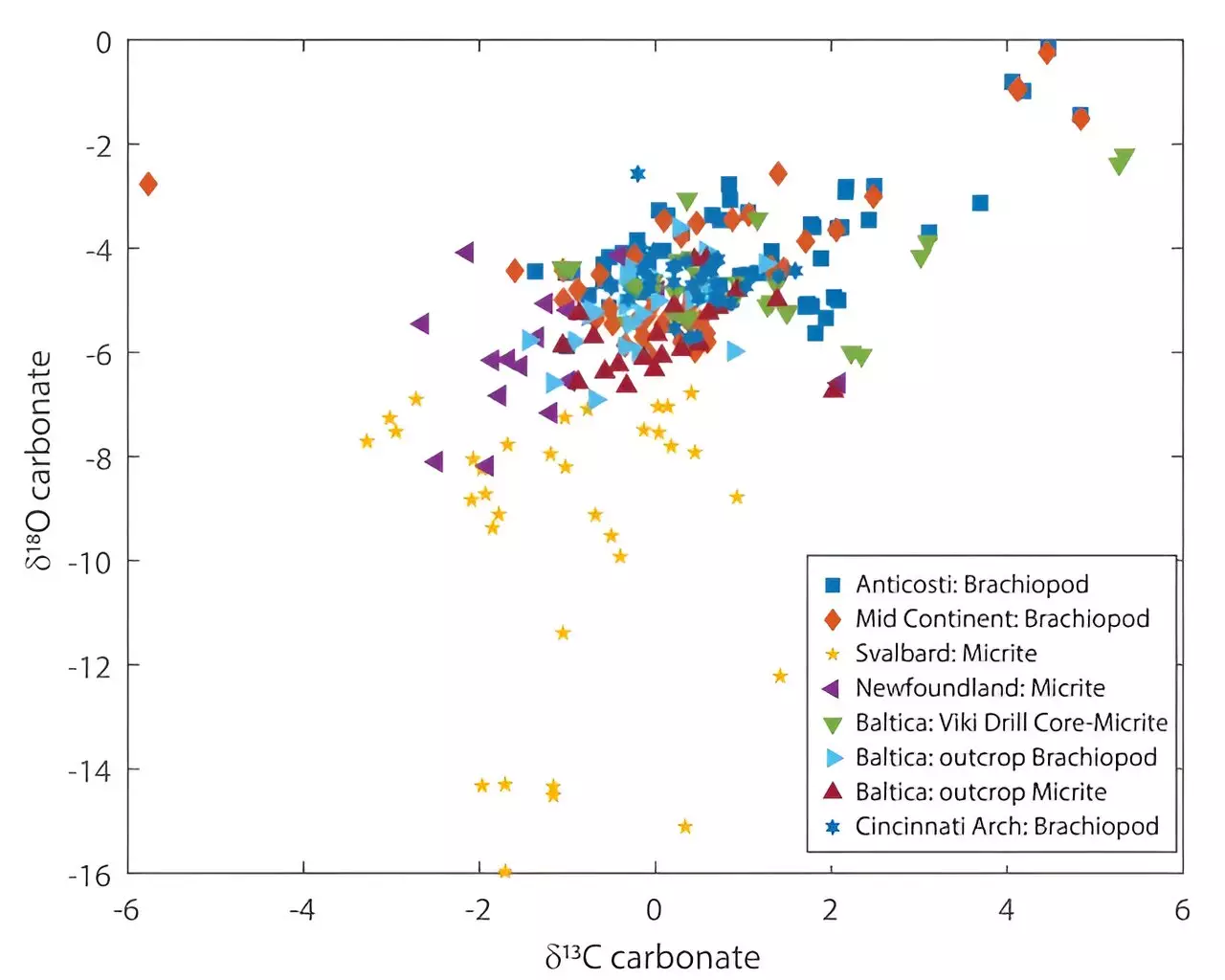The study of oxygen isotopes in seawater is not merely an academic endeavor; rather, it carries profound implications for our understanding of Earth’s climatic past. An international research group comprising oceanographers, Earth scientists, and marine specialists has thrown new light on the oxygen isotope ratio (denoted as δ18O) in seawater, suggesting it has undergone gradual shifts over the span of 540 million years. This assertion is underpinned by an investigation into geological samples hailing from the Ordovician period and articulated in a recent publication in the *Proceedings of the National Academy of Sciences*.
For decades, the scientific community has been embroiled in a debate about the variations in the δ18O ratio within ocean water from the Ordovician to the present. Some experts staunchly maintain that the isotopic composition has remained static, while others have pointed toward accumulating evidence indicating an evolutionary trend towards increased δ18O ratios. The recent findings of this research team lend credence to the latter, advocating the need for a reassessment of climatic models that hinge on these isotopic measurements.
In terms of methodology, the research team identified two primary factors believed to be drivers behind fluctuations in the δ18O ratio: hydrothermal activity and continental weathering. Hydrothermal alteration, where heated seawater interacts with specific rock types, is thought to significantly influence isotope ratios, whereas weathering processes of continental crust play a supplementary, albeit lesser, role.
To gather empirical data, the scientists extracted geological drill cores from the Baltic basin located in Estonia. This endeavor was complemented by surface sample collections across the area to provide a comprehensive overview. Utilizing a technique known as clumped isotope thermometry, the researchers were able to measure the binding of carbon isotopes to oxygen isotopes within carbonate minerals, enabling estimations of historical ocean temperatures which were previously misconstrued.
The results of their analysis revealed that the Ordovician seawater exhibited a lower δ18O ratio, signifying cooler ocean temperatures than previously estimated. This observation aligns with the hypothesis of a slowly evolving isotopic landscape over the aeons. Nevertheless, it is essential to recognize that while the research bolsters the argument for changes in the oxygen isotope ratio, it does not provide conclusive proof. The ongoing debate around the variability of δ18O remains a point of contention within the scientific community, suggesting that additional, more rigorous evidence is needed before arriving at definitive conclusions.
The investigation presents a significant step toward resolving controversies in marine isotope studies, but further exploration will be crucial in fully disentangling the nuanced interplay of processes that have shaped seawater isotopic composition over geological time. The findings not only enrich our understanding of past climatic conditions but also emphasize the complexity inherent in interpreting Earth’s geological narrative.


Leave a Reply